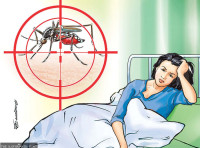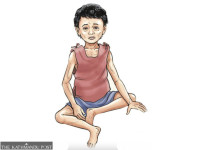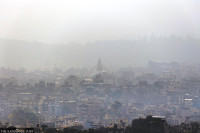Health
Three dead, three test positive for cholera in Saptari
Two children and an elderly have died in Chhinnamasta Rural Municipality over the past ten days.
Post Report
Three people suffering from severe diarrhoea have tested positive for cholera in the rapid diagnostic test (RDT) carried out on Sunday in the disease-hit Lekharam, Sadabasti in ward 5 of Chhinnamasta Rural Municipality of Saptari district.
Over the past ten days three people including two children–a one-year-old boy and a four-year-old girl—and a 70-year-old man succumbed to the deadly disease in the rural municipality.
“We didn’t know about the spread of diarrheal infection and deaths until Friday,” said Dipendra Prasad Yadav, health coordinator of the rural municipality. “We have deployed a team of health workers, supplied medicine to the affected village, and carried out rapid diagnostic tests.”
According to Yadav, out of nine stool samples tested, three returned positive for cholera. Health workers are preparing to send the samples for further confirmation to the provincial public health laboratory in Dhanusa.
Cholera is a highly infectious disease that causes severe diarrhoea and vomiting, which can lead to dehydration and death within a few hours if left untreated.
In Bara and Parsa districts, at least four people have died of cholera and over 1,800 others have been hospitalised since the first week of August.
Health authorities resorted to anti-cholera vaccination after all their efforts failed to control the spread of infection. Over one million people from Parsa and some areas of Bara were administered the anti-cholera vaccine.
Officials say that everyone above one year of age from all municipalities of Parsa district and six adjoining municipalities in Bara district—the areas hardest hit by the outbreak—were administered with oral cholera vaccine immediately after the Dashain holidays last month.
Public health experts say the Birgunj outbreak is the largest since the Jajarkot epidemic in 2009. Sixteen years ago, the far-western district of Jajarkot saw a major cholera outbreak that killed several and infected hundreds. They say the Birgunj outbreak exposes critical gaps in the government’s preparedness and response system, and water and sanitation conditions.
Experts are particularly alarmed by both the severity of the outbreak and the deaths it has caused.
Nepal often witnesses outbreaks of water- and food-borne diseases, including cholera, during the monsoon season as floodwaters contaminate most of the drinking water sources.
Last year, at least 95 cholera cases were confirmed in Kathmandu, Lalitpur, Jajarkot, Pyuthan, Makawanpur, Rolpa, Sindhupalchok, Achham, and Rautahat districts. The health ministry administered cholera vaccine to people from the affected areas of Kapilvastu, Rautahat, and Kathmandu a few years ago to halt the spread of the disease.
Poor sanitation and hygiene make the country highly vulnerable to waterborne diseases, including diarrhoea, dysentery, typhoid, hepatitis, and cholera, especially in the monsoon season, according to doctors.
They say the risk of waterborne diseases will not decrease until the water and sanitation conditions improve, and people get safe drinking water. Several other factors, including storage conditions, supply pipes, and pollution of water sources, also determine the quality of water supplied to households.
The World Health Organisation says cholera is a global threat to public health, and a multifaceted approach is the key to controlling the disease and reducing deaths.




 13.12°C Kathmandu
13.12°C Kathmandu













